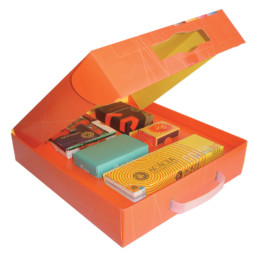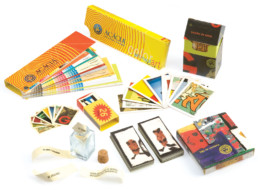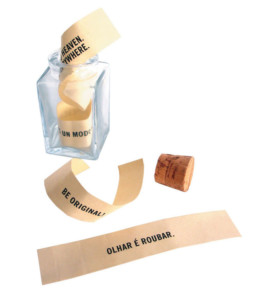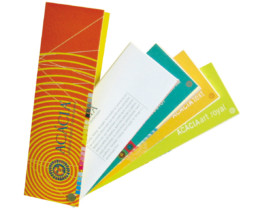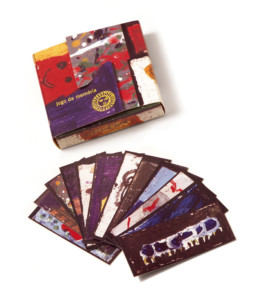Kit Acácia
In 2002, Ripasa S.A. Pulp and Paper expanded its line of Acacia paper adding new colors, weights and surface textures. Rico Lins was hired to develop a new sample book and propose relationship actions for the product. He soon found that innumerable possibilities of application of the paper were not clear to users and its use was often limited to commemorative printed matter and certain special products.
Creative direction and Design: Rico Lins
Curatorship and event: Art 3
Graphic production: Jairo da Rocha
Client
Ripasa
Created in
São Paulo, 2002
Category
Promotional
Award
7th Brazilian Biennial of Graphic Design, ADG, 2004.
Lins proposed an action to reposition the product with creative professionals, a strategy enhanced by the firm’s extensive network of institutional partners. This action led to a partnership between the printing industry and the Museum of Modern Art (MAM) in São Paulo and the creation of a series of pieces focused on art education. These were developed using works in the museum’s collection and others produced in the workshops and courses offered by the museum. The result was launched in an installation at MAM Ibirapuera.
By building a clear bridge between the creativity and innovation of the museum’s educational activities and the characteristic qualities of the paper, the action not only added value to the Acacia line, but also generated examples of technical excellence for the printing companies involved in the process and benefited MAM, which now had a series of supplementary didactic materials at its disposal.
Among creative professionals, the action opened up the wide potential of the paper for printing four-color images, special colors, and the use of creases, folds and cuts, putting its qualities in evidence and increasing market awareness and consumption. In addition to the new sample book, the Acacia kit is composed of interactive materials that explore the graphics capabilities of the new line of papers: card deck (with letters), a memory game and packages with artistic content. The glass bottle, which was accommodated in the package along with the other elements of the kit, contained small paper strips with phrases and messages oriented toward the target public.

 Português do Brasil
Português do Brasil